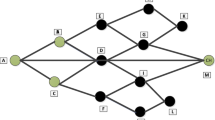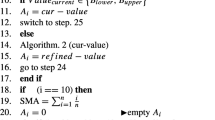Abstract
A wireless sensor network is a network composed of various types of sensors for the detection of magnetic, thermal, infrared, and acoustic fields, in addition to earthquakes and radio detecting and ranging (radar), among others. The size of the data collected from the various sensors is significant, and it is utilized in various applications such as artificial intelligence, data prediction, and analyses. However, the hardware of a wireless sensor node has limited energy and consumes a significant amount of energy for data transmission. Several studies have been conducted on multi-hop communication, clustering, and the compression/merging of data to increase energy efficiency in data transmission. In this study, the differential data processing (DDP) method is employed to reduce the size of the transmission data and improve the performance of wireless sensor networks. We propose node identification (ID)-based DDP and cluster header (CH)-based DDP. The node ID-based DDP transmits the initial collected aggregate data to the CH at the start of the collection, compares the previous collected data with the currently collected data, and then transfers the difference value to the CH. The CH is transmitted to the base station based on the smallest value of the collected data. The CH-based DDP collects data from the CH, generates reference data for the difference, and transmits the reference data at the time of cluster broadcasting. The member node performs differential processing on the collected data using the reference data transmitted to the CH. The performances of low-energy adaptive clustering hierarchy and DDP were compared. The simulation results revealed that the performance of the wireless sensor networks was improved by efficiently using the energy of the sensor nodes and by decreasing energy consumption in data transmission, given the reduction in the data size.













Similar content being viewed by others
References
Oracle (2011) Big data: business opportunities, requirements and oracle`s approach. pp 1–8
Sagiroglu S, Sinanc D (2013) Big data: a review. In: International Conference on Collaboration Technologies and Systems (CTS)
Karray F, Jmal MW, Abid M, BenSaleh MS, Obeid AM (2014) A review on wireless sensor node architectures. In: The Ninth International Symposium on ReCoSoC. IEEE, pp 1–8
Kimura N, Latifi S (2005) A survey on data compression in wireless sensor networks. In: International Conference on Information Technology: Coding and Computing (ITCC’05), vol II
Kim J (2018) Routing techniques for data aggregation in sensor networks. JIPS 14(2):369–417
Heinzelman WR, Chanrakasan A, Balakrishnan H (2000) Energy-efficient communication protocol for wireless microsensor networks, In: Proceedings of the 33rd Annual Hawaii International Conference on System Sciences, Maui, USA, pp 1–10
Wan R, Xiong N, Loc N (2018) An energy-efficient sleep scheduling mechanism with similarity measure for wireless sensor networks. Hum-Centric Comput Inf Sci 8(1):18
Sadler JCM, Martonosi M (2006) Data compression algorithms for energy-constrained devices in delay tolerant networks. In: Sensor systems, pp 265–278, 2006
Rhim H, Tamine K, Abassi R, Sauveron D, Guemara S (2018) A multi-hop graph-based approach for an energy-efficient routing protocol in wireless sensor networks. Hum-Centric Comput Inf Sci 8(1):30
Miao Q, Rongbo Z (2018) A Monte Carlo localization method based on differential evolution optimization applied into economic forecasting in mobile wireless sensor networks. EURASIP 2018:32
Deosarkar BP, Yadav NS, Yadav RP (2008) Clusterhead selection in clustering algorithms for wireless sensor networks: a survey. In: IEEE International Conference on ICCCn 2008. IEEE, pp 1–8
Akyildiz I, Su W, Sankarasubramaniam Y, Cayirci E (2002) A survey on sensor networks. IEEE Commun Mag 40(8):102–114
Rajagopalan R, Varshney P (2006) Data-aggregation techniques in sensor networks: a survey. IEEE Commun Surv Tutor 8(4):48–63
Lee S, Kim H (2018) An energy-efficient low-memory image compression system for multimedia IoT products. EURASIP 2018:87
Sadler CM, Martonosi M (2006) Data compression algorithms for energy-constrained devices in delay tolerant networks. In: SenSys, pp 265–278
Welch TA (1984) A technique for high-performance data compression. IEEE Comput 17(6):8–19
Witten I, Neal R, Cleary J (1987) Arithmetic coding for data compression. Commun ACM 30:520–540
Weather data portal (https://Data.kma.go.kr) (2018).https://data.kma.go.kr/. Accessed: 08 Apr 2018
Acknowledgements
This work was supported by the Basic Science Research Program through the National Research Foundation of Korea (NRF) funded by the Ministry of Education [Grant Number NRF2017R1D1A1B03035833].
Author information
Authors and Affiliations
Corresponding author
Additional information
Publisher's Note
Springer Nature remains neutral with regard to jurisdictional claims in published maps and institutional affiliations.
Rights and permissions
About this article
Cite this article
Lim, K.K., Park, J. & Shon, J.G. Differential data processing technique to improve the performance of wireless sensor networks. J Supercomput 75, 4489–4504 (2019). https://doi.org/10.1007/s11227-019-02932-4
Published:
Issue Date:
DOI: https://doi.org/10.1007/s11227-019-02932-4




